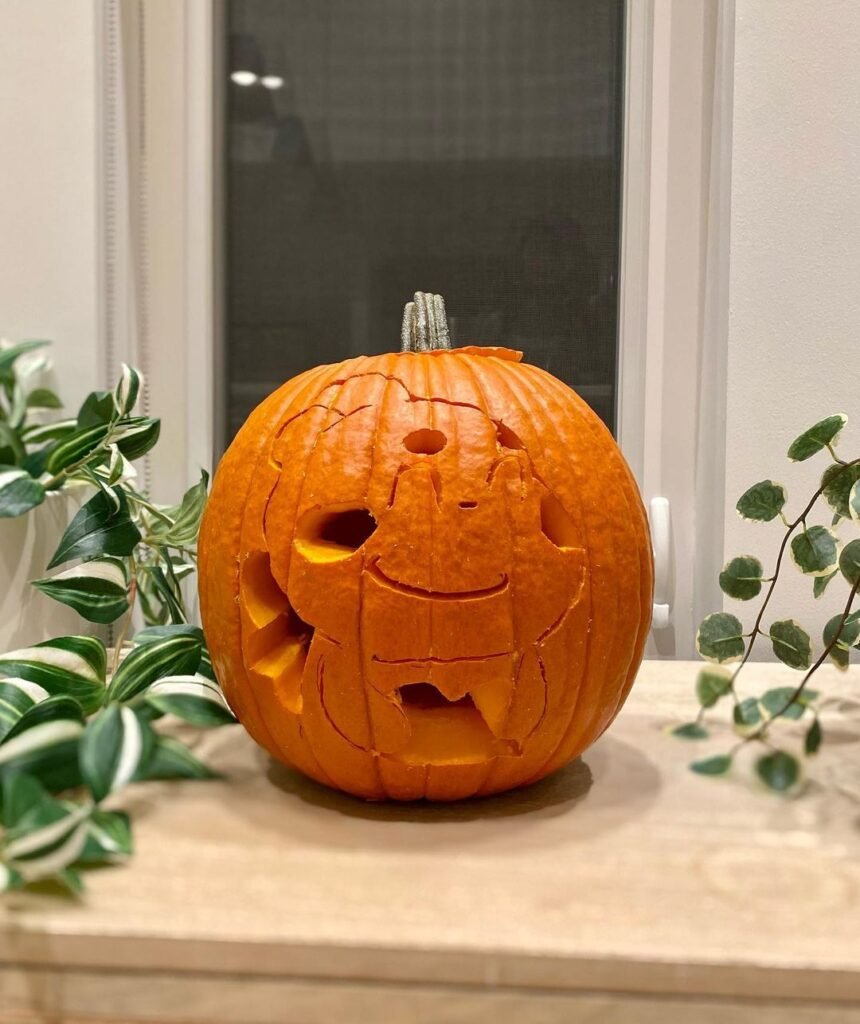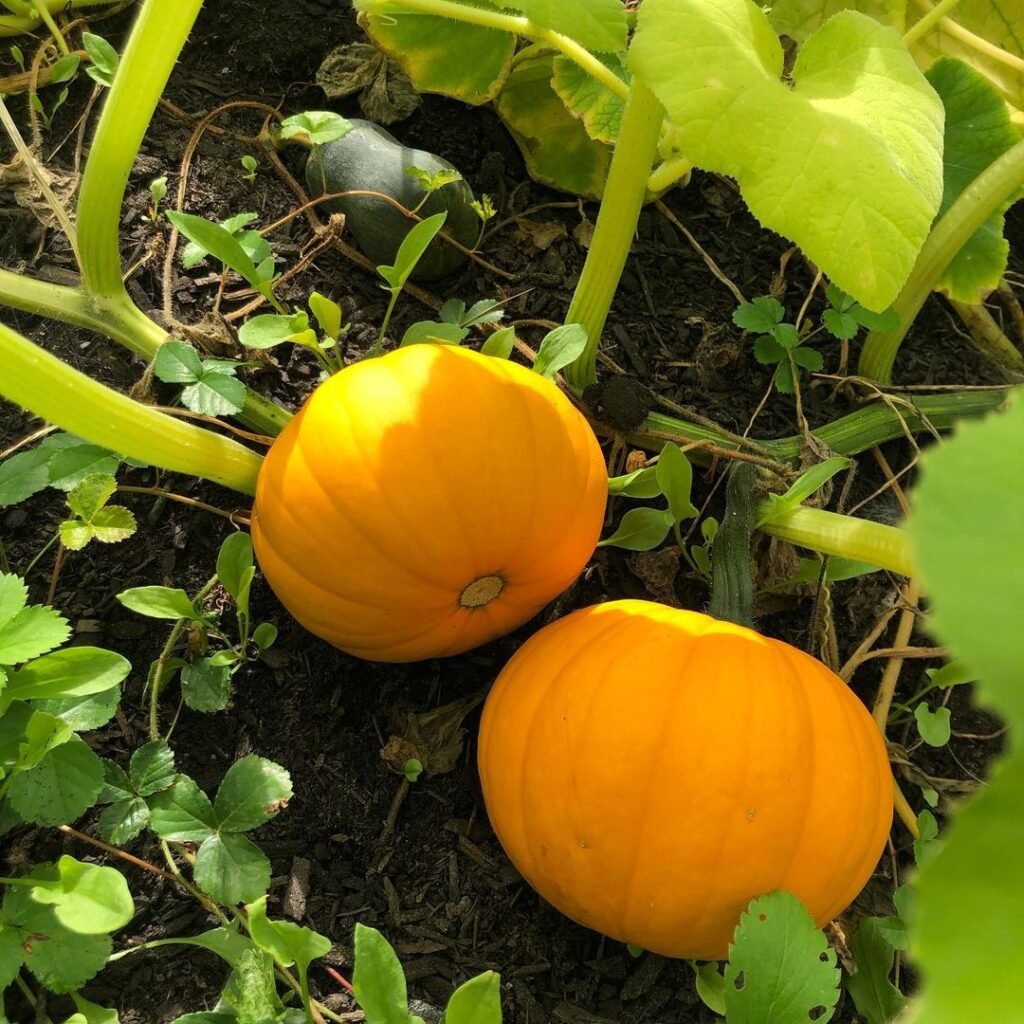Growing your own pumpkin patch is a fun and rewarding way to prepare for the Halloween season. By selecting the right varieties, providing ample space and nutrients and properly caring for your pumpkin plants, you can ensure a spooktacular harvest full of carving and cooking pumpkins.
As an experienced horticulturist with a passion for autumn gardening, I’m excited to share my top tips for cultivating a successful pumpkin patch. Whether you’re a seasoned gardener or a first-time pumpkin grower, this guide will help you create the perfect pumpkin patch for all your Halloween needs.

Choosing the Right Pumpkin Varieties
Jack-o’-Lantern Pumpkins

- Look for varieties like ‘Connecticut Field’, ‘Howden’, or ‘Spookie’ for large, classic carving pumpkins.
- These tend to have thicker, harder rinds that are ideal for cutting and displaying.
Pie Pumpkins

- ‘Sugar Pie’, ‘Lumina’, and ‘Baby Boo’ are excellent choices for culinary use.
- Smaller in size with sweeter, denser flesh, these are perfect for baking, cooking, and making pumpkin puree.
Decorative Pumpkins

- Consider growing ‘Cinderella’, ‘Blue Doll’, or ‘Fairytale’ pumpkins for unique shapes and colors.
- These can add visual interest to your Halloween displays.
For more information on pumpkin varieties, check out this pumpkin selection guide from the University of Illinois Extension.
Planting Your Pumpkin Patch
Site Selection
- Choose a sunny location with well-draining soil.
- Pumpkins require at least 6-8 hours of direct sunlight per day.
Soil Preparation
- Amend the soil with compost or aged manure to improve fertility and drainage.
- Aim for a soil pH between 6.0 and 6.8.
Planting
- Sow seeds or transplant seedlings after the last frost date in your area.
- Space plants 3-5 feet apart in rows 6-8 feet apart to allow for vine growth.
- Plant seeds 1-2 inches deep and water thoroughly.
For more on pumpkin planting and soil requirements, visit the Clemson University Cooperative Extension guide.
Caring for Your Pumpkin Patch
Watering
- Keep the soil consistently moist, especially during flowering and fruit development.
- Avoid letting the soil dry out, as this can lead to premature ripening or fruit loss.
Fertilizing
- Apply a balanced, slow-release fertilizer at planting and again mid-season.
- Avoid high-nitrogen fertilizers, as they can encourage excessive vine growth over fruit production.
Pest and Disease Management
- Monitor for common pests like cucumber beetles, squash bugs, and powdery mildew.
- Use organic pest control methods or targeted, approved pesticides if necessary.
Vine and Fruit Management
- Prune or train vines to prevent them from taking over the entire garden.
- Support large pumpkins with small platforms or slings to prevent damage.
For detailed information on pumpkin pest and disease control, check out this guide from the University of Georgia Extension.
Harvesting and Curing Your Pumpkins
Timing the Harvest
- Pumpkins are ready to harvest when the rind is hard and the stem begins to brown and shrivel.
- Carving pumpkins should be harvested about 2-3 weeks before you plan to use them.
- Pie pumpkins can be harvested a bit later, about 1 week before use.
Harvesting
- Carefully cut the pumpkin from the vine, leaving 3-4 inches of stem attached.
- Handle pumpkins gently to avoid bruising or damaging the rind.
Curing
- Place harvested pumpkins in a warm, dry, and well-ventilated area for 10-14 days.
- This curing process helps harden the rind and increase storage life.
For more on pumpkin harvesting and curing, visit the University of New Hampshire Extension’s pumpkin growing guide.
Storing Your Pumpkins
- After curing, store pumpkins in a cool, dry place with good air circulation.
- Ideal storage temperatures are between 50-60°F.
- Properly cured and stored pumpkins can last 2-3 months or more.
Growing your own pumpkin patch is a fun and rewarding way to prepare for the Halloween season. By selecting the right varieties, providing proper care, and timing the harvest, you can ensure a bountiful crop of pumpkins for carving, cooking and decorating. Embrace the spooky spirit of the season by cultivating your very own pumpkin patch. Happy gardening and Happy Halloween!
For more seasonal gardening tips, visit the Missouri Botanical Garden’s Gardening Help page.